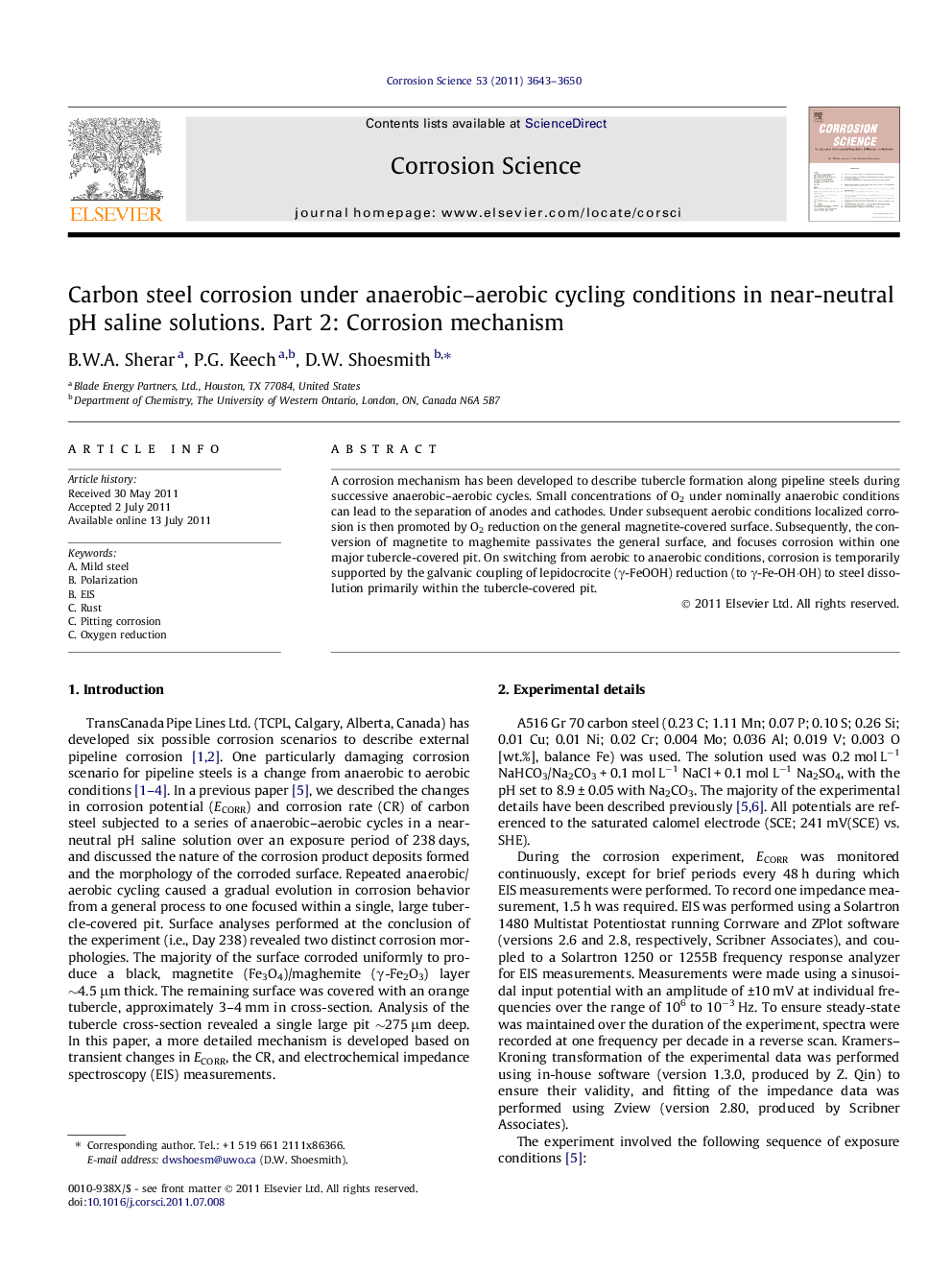| Article ID | Journal | Published Year | Pages | File Type |
|---|---|---|---|---|
| 1469667 | Corrosion Science | 2011 | 8 Pages |
A corrosion mechanism has been developed to describe tubercle formation along pipeline steels during successive anaerobic–aerobic cycles. Small concentrations of O2 under nominally anaerobic conditions can lead to the separation of anodes and cathodes. Under subsequent aerobic conditions localized corrosion is then promoted by O2 reduction on the general magnetite-covered surface. Subsequently, the conversion of magnetite to maghemite passivates the general surface, and focuses corrosion within one major tubercle-covered pit. On switching from aerobic to anaerobic conditions, corrosion is temporarily supported by the galvanic coupling of lepidocrocite (γ-FeOOH) reduction (to γ-Fe-OH·OH) to steel dissolution primarily within the tubercle-covered pit.
► We developed a corrosion model to describe tubercle deposits on pipeline steels. ► Aerobic corrosion initially accelerates metal dissolution in the pores. ► A galvanic couples develops between FeIII hydroxides and steel during anaerobic corrosion. ► Corrosion damage eventually concentrates at one particular tubercle-covered pit.
